Instructions for adding 'Check for Updates' option to Windows Context Menu
Windows 10 is gradually switching from Control Panel to new Settings application. In this application, you can easily check for new updates by navigating to Update and Security -> Windows Update, then clicking Check for Updates. However, you can do this faster by passing the Check for Updates option to the context menu on the desktop.
Add Check for Updates option to the context menu on the desktop
Like many other tasks, you need to edit the Windows Registry to add the Check for Updates option to the context menu. To get started, press Windows + R , type regedit and click Enter. Also you can search for it in the Start menu.
This will open the Windows Registry window. Here, copy the link below, paste it into the address bar of Registry Editor and click Enter.
HKEY_CLASSES_ROOTDesktopBackgroundShell
As soon as you click Enter, you will be taken to the item you want to edit.

Right-click on the Shell item and select New> Key .

Name the new key Check for Updates and click Enter. This is the name that will appear in the context menu, so you can customize it to suit your needs.

Right-click on the newly created key and click New -> Key again.

Name the new key "command" and click Enter to save the name.

After creating the key, we need to direct them to the update option in the Windows 10 Settings application. We can do this using a specific URI. First, make sure you've selected the Check for Updates key, then click the New -> String Value option by right-clicking on the context menu in the right panel.
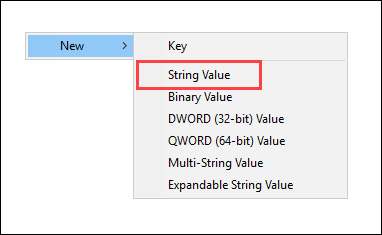
Name the new String Value 'SettingsURI' and click Enter.
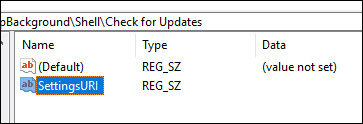
Double-click the value just created to open the Edit Value window. Enter ms-settings: windowsupdate-action in the Value Data field and click OK to save the changes.

Now, select the key command that appears in the left pane, then right-click the table on the right and select New -> String Value .
Name the new String Value 'DelegateExecute' and click Enter to save the changes.
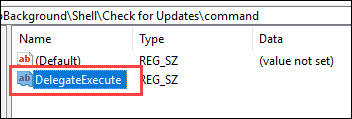
To change the value of the data, double-click the newly created value, enter the value below into the Value data field and click OK to save the change.
{556FF0D6-A1EE-49E5-9FA4-90AE116AD744} 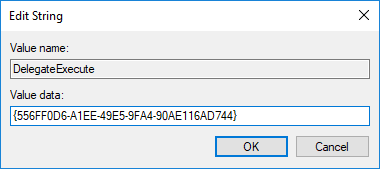
As soon as you have made the changes, you will see a new 'Check for Updates' option added to the context menu on the desktop. Reboot the system if you do not see this new option. in the context menu will directly give you access to the update check option in the Settings application without having to perform many operations.

So it looks like the basic work is done. However, if you want context menus to look better, you can add icons to the Check for Updates option. To add an icon, click Check for Updates , then right-click on the right panel and select New -> String Value .
Name the new String value "Icon".
Double click on the value, enter the path below into the Value Data field and select OK to save the changes.
% SystemRoot% System32shell32.dll, -47
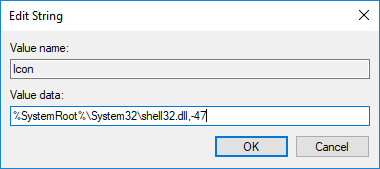
That's all we need to do. At this point, you will see an interesting icon next to the Check for Updates option in the context menu.
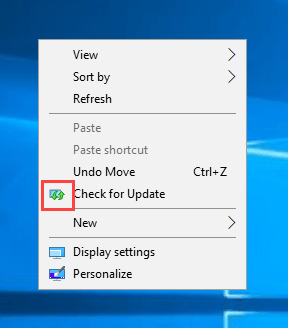
It's great, right. Now, if you want to check for updates, you will not need to manipulate much, just right-click on the context menu in the desktop and select Check for Updates.
Good luck!
You can consult:
- Some tips to free up Windows 10 computer hard drive space
- Creating Windows portable on Windows 10, Windows 8.1 Enterprise does not need software
- How to turn off Automatic Update (update) on Windows 10
You should read it
- How to use AI Writing Check to check text generated by AI
- How to add the Open Powershell Here option to the context menu on Windows
- How to check and monitor RAM status on Windows 10
- Microsoft warns, clicking Check for Updates will make the new Windows 10 update unstable
- Microsoft releases 'improved version' PC Health Check app
- Guide to fix Windows 7 update check error
- 4 simple ways to check the configuration and hardware information of computers and laptops
- How to check hard drive health in 3 ways
May be interested
- How to add Open with Notepad to the context menu in Windows 10
 with some registry editing, you can expand the context menu options, such as by adding the open with notepad option to it.
with some registry editing, you can expand the context menu options, such as by adding the open with notepad option to it. - How to delete options in the Windows context menu
 have you ever right-clicked on a file or folder and wondered where the options to mess up this context menu and how to delete them? please read the following article.
have you ever right-clicked on a file or folder and wondered where the options to mess up this context menu and how to delete them? please read the following article. - How to restore the old context menu in Windows 11
 the context menu (right-click menu) in windows 11 is a major source of frustration for many users. it's slower, requires extra clicks to access familiar options, and is less intuitive than the classic menu.
the context menu (right-click menu) in windows 11 is a major source of frustration for many users. it's slower, requires extra clicks to access familiar options, and is less intuitive than the classic menu. - How to bring Windows 10's right-click menu to Windows 11
 on windows 11, microsoft changed many design aspects. one of the things that is completely refreshed is the context menu aka right-click menu.
on windows 11, microsoft changed many design aspects. one of the things that is completely refreshed is the context menu aka right-click menu. - How to Add Permanently Delete Option to Windows 11/10 context menu
 in this article tipsmake.com will show you how to add the permanently delete option to the context menu (right-click menu) on windows 11/10.
in this article tipsmake.com will show you how to add the permanently delete option to the context menu (right-click menu) on windows 11/10. - How to fix slow context menu in Windows 10's File Explorer
 windows 10's context menu can slow down over time. here's how to fix context menu menu that opens slowly, freezes or hangs when you right-click.
windows 10's context menu can slow down over time. here's how to fix context menu menu that opens slowly, freezes or hangs when you right-click. - How to Clean the Windows Context Menu via Registry
 if you have been using windows for some time and have installed several applications or programs, you'll probably find a lot of clutter in your context menu. if you're unfamiliar with the context menu, it is the menu that pops up when you...
if you have been using windows for some time and have installed several applications or programs, you'll probably find a lot of clutter in your context menu. if you're unfamiliar with the context menu, it is the menu that pops up when you... - How to remove Properties from the Recycle Bin context menu in Windows 10
 if you do not want to allow others to access the properties menu, you can hide or delete it. in this tutorial, tipsmake.com will show you two methods to remove the properties option from the recycle bin context menu in windows 10.
if you do not want to allow others to access the properties menu, you can hide or delete it. in this tutorial, tipsmake.com will show you two methods to remove the properties option from the recycle bin context menu in windows 10. - How to add 'Edit or Run with' to the right-click menu of PS1 files
 a ps1 file is a script or cmdlet, used by windows powershell. this tutorial will show you how to add or remove a custom edit or run with menu to the context menu for powershell .ps1 files for all users in windows 10.
a ps1 file is a script or cmdlet, used by windows powershell. this tutorial will show you how to add or remove a custom edit or run with menu to the context menu for powershell .ps1 files for all users in windows 10. - WinRAR 6.10 beta update fixes Windows 11 context menu bug
 windows 11 brought a lot of changes, including an updated context menu (right-click menu) that many people seem to be having a hard time getting used to.
windows 11 brought a lot of changes, including an updated context menu (right-click menu) that many people seem to be having a hard time getting used to.










 How to capture login screen and lock screen in Windows 10
How to capture login screen and lock screen in Windows 10 How to show the clock on the Taskbar in Windows 10
How to show the clock on the Taskbar in Windows 10 Microsoft announced a new version of Windows 10
Microsoft announced a new version of Windows 10 How to set a password for a Windows 10 computer
How to set a password for a Windows 10 computer How to adjust the screen brightness of Windows 10 on the desktop
How to adjust the screen brightness of Windows 10 on the desktop Tutorial 4 ways to adjust the screen brightness of Windows 10
Tutorial 4 ways to adjust the screen brightness of Windows 10